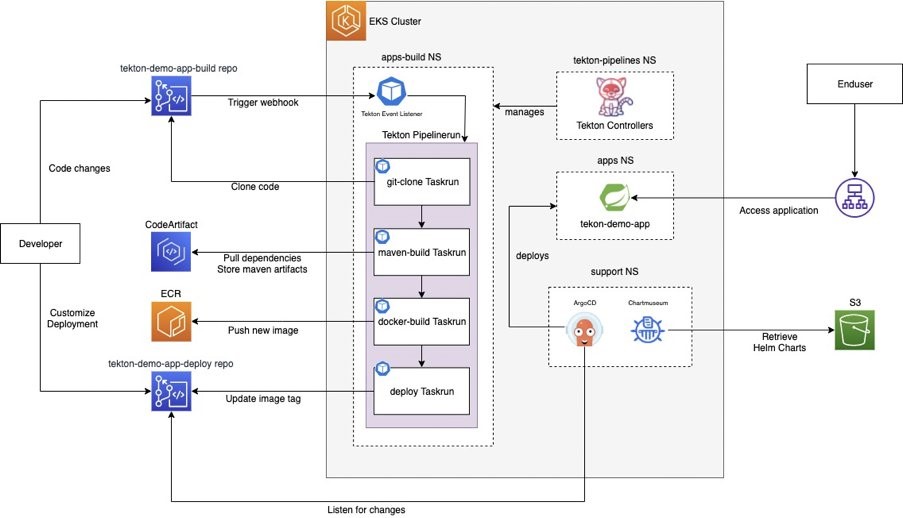Containers
Category: Learning Levels
Amazon EKS now supports Kubernetes version 1.25
Introduction The Amazon Elastic Kubernetes Service (Amazon EKS) team is pleased to announce support for Kubernetes version 1.25 for Amazon EKS and Amazon EKS Distro. Amazon EKS Anywhere (release 0.14.2) also supports Kubernetes 1.25. The theme for this version was chosen to recognize both the diverse components that the project comprises and the individuals who […]
Kubernetes as a platform vs. Kubernetes as an API
Introduction What is Kubernetes? I have been working on this technology since the beginning and after 8 years, I’m still having a problem defining what it is. Some people define Kubernetes as a container orchestrator but does that definition capture the essence of Kubernetes? I don’t think so. In this post, I’d like to explore […]
Optimizing your Kubernetes compute costs with Karpenter consolidation
Introduction Karpenter was built to solve issues pertaining to optimal node selection in Kubernetes. Karpenter’s what-you-need-when-you-need-it model simplifies the process of managing compute resources in Kubernetes by adding compute capacity to your cluster based on a pod’s requirements. With the recent release of workload consolidation, Karpenter can now be enabled to continuously monitor and optimize […]
EKS Persistent Volumes for Instance Store
The Kubernetes project is made up of a number of special interest groups (SIGs) that focus on a particular part of the Kubernetes ecosystem. The Storage SIG is focused on different types of storage (block and file) and ensuring that storage is available to containers when they are scheduled. One of the subprojects of the Storage […]
Continuous Delivery of Amazon EKS Clusters Using AWS CDK and CDK Pipelines
This blog is no longer up to date and we recommend reviewing the Amazon EKS Blueprints for CDK Pipeline SDK module which makes it easier to create infrastructure Continuous Delivery pipelines via AWS CodePipeline. Customers are looking for ways to automate the deployment of their Amazon EKS clusters across different versions, environments, accounts, and Regions. […]
Cloud Native CI/CD with Tekton and ArgoCD on AWS
Introduction With the ongoing popularity and adoption of container orchestrators such as Kubernetes, more and more cloud-native applications are built on top of it. Besides business applications, companies are migrating their infrastructure-related components such as CI/CD systems as well. But are those systems ready for such modern platforms? The answer depends. Clearly, most of the […]
Controlling and monitoring AWS App Runner applications with Amazon EventBridge
Many applications do not need to be available 24/7, such as those in development and QA environments. AWS App Runner supports this and allows applications to be paused, or deactivated, to lower costs when not in use. The applications can then be resumed or activated when they are needed. This blog post uses this example […]
Amazon ECS on AWS Outposts
AWS Outposts is a fully managed service that offers the same AWS infrastructure, AWS services, APIs, and tools to virtually any data center, co-location space, or on-premises facility, in the form of a physical rack connected to the AWS global network. AWS compute, storage, database, and other services run locally on Outposts, and you can […]
GitOps model for provisioning and bootstrapping Amazon EKS clusters using Crossplane and Flux
In an earlier blog (Part 1 of the series), I discussed the adoption of the GitOps model as an efficient strategy for provisioning cloud provider-specific managed resources, such as, for example, Amazon S3 bucket and Amazon RDS instance, that application workloads depend on. The blog presented the details of implementing a use case where an Amazon […]
Connecting Google Kubernetes Engine (GKE) Clusters to Amazon EKS
Customers running Google Kubernetes Engine (GKE) clusters can now use the Amazon Elastic Kubernetes Service (Amazon EKS) to visualize GKE cluster resources. This post describes how to use Amazon EKS Connector to connect a GKE cluster to the Amazon EKS console. The EKS console provides a single pane of glass to visualize all your Kubernetes […]









